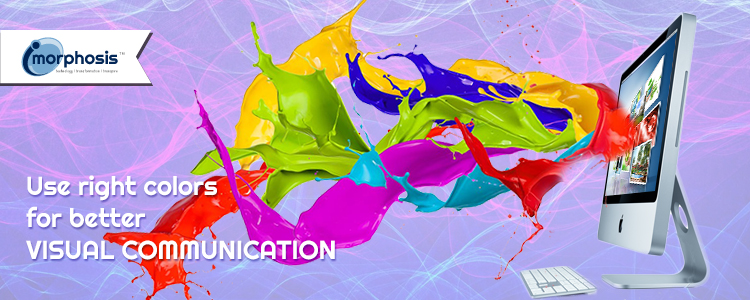Color stirs human emotion. It is a powerful psychological trigger that evokes emotion and changes perception. Since the beginning of human civilization, artists and painters have earned accolades for their ability to play with colors. Use of color is now significant across various business applications- initially it was only advertising and now, web designing.
In web designing, selection and determining the correct color combination for a website is important. So, first web designers need to understand the psychology of colors, evaluate it and then incorporate it into the web designs.
What is Color Psychology?
It is the science that defines the effect of color on human behavior. Color Psychology is a branch of behavioral psychology and is complicated. Color plays an important role in daily life, so how can website and logo designing can stay behind! It plays an important role in conveying brand message to specific users.
Science states that color can evoke positive, negative or mixed emotions in human. As mentioned in Kissmetrics, it takes only 90 seconds for any customer to form an opinion about any product. Further, it states that color determines almost 62 to 90 percent of the customer interaction with products.
Thus, use of color is critical and the success of web designing depends on correct use.
Color and Website Designing
When the discussion is about the use of colors in website designing the areas you need to emphasize are graphics, borders, buttons, pop-ups, headings, sidebars and background.
Use of color in designing is subjective. Due to personal preference and cultural background, a color might evoke a plethora of reaction among different people. Designers need to use colors the right way , for the right audience , in right time and right purpose .
Sociological differences affect to a great deal on the color preferences. Various surveys have highlighted the preferences of men and women and the implication of each color on the human psyche.
How to use Colors
Designers use different colors for the website to fulfill a specific objective. It connects with the readers and supports the purpose of your design and brand. Three important aspects that every web designers needs to emphasize are:
1. Attract attention – Color reduces boredom and increases the attention span. Studies prove that the use of certain colors emphasizes a particular content or button. For example the color red makes a section or button stand out and grab attention. In short, it stimulates the visual sense.
2. Improve readability – Color increases readability and clarity by almost 40 percent. For instance the use of contrasting colors makes it more legible for the human brain to understand. Strategic use of colors enhances clarity of any website content which helps the human brain in terms of memory and reasoning.
3. Tap in emotions – Color is one of the most powerful tools used in visual communication. It influences perception and feelings. Different moods and meanings are attached to each color and it might change with demography. Readers will consciously or unconsciously relate to a color so designers need to emphasize on it while designing a website.
The secret is to use psychology-appropriate color for the website that will match the brand, target audience and message that they want to convey.
Perfect Color Combination for Website
There is no ideal combination for your website. Warm colors urge to take actions, whereas cold colors enhance professionalism. The perfect color combination for website depends on various psychological considerations. You also need to emphasize is the vision and mission of your brand. Correlation of colors and its impact on the website viewers plays a crucial role in web designing. It is thus the role of designers to understand the impact of each color and use it effectively so that it creates a long-lasting impact on the mind of audiences.





Pingback: How to create an Emotional Design to attract your Client()
Pingback: Professional Guide to improve your color combin...()